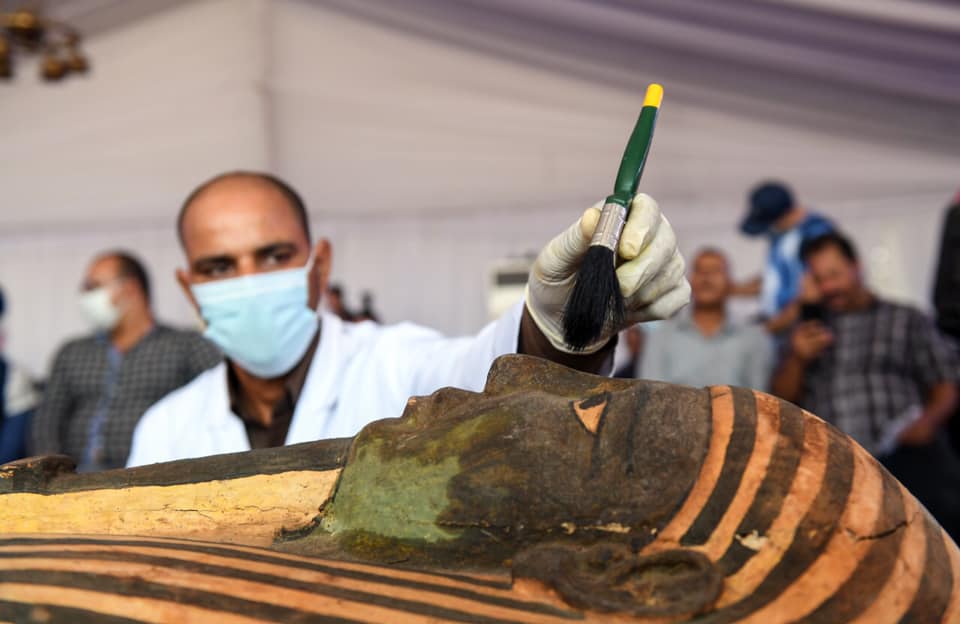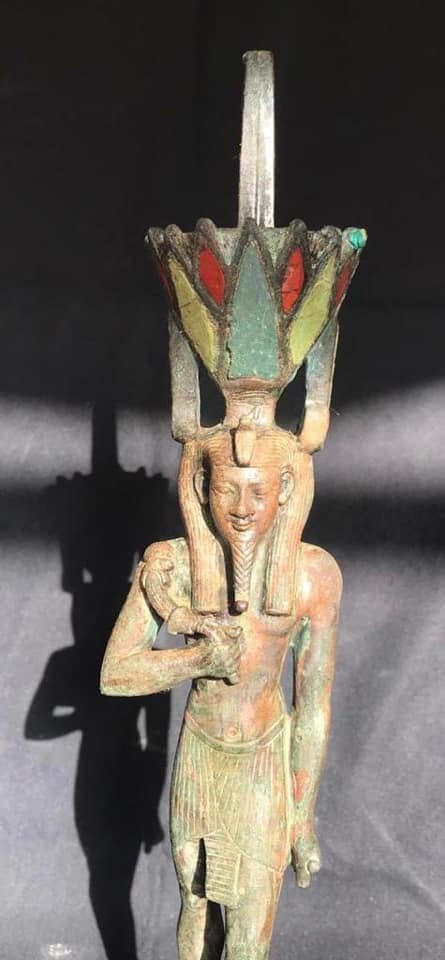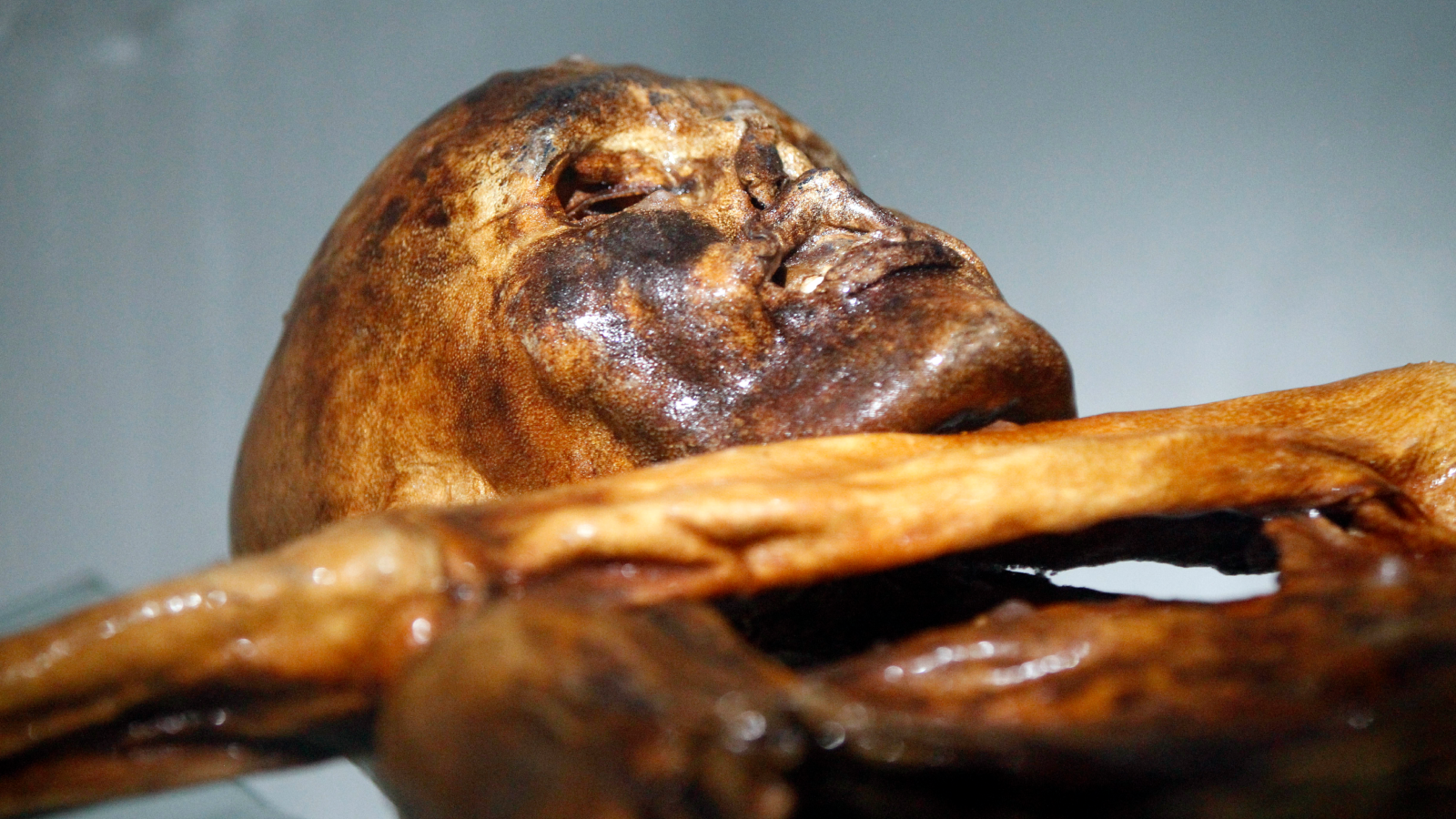59 priest mummies and statue of unusual god unearthed in Egypt

In a span of one month, the number of sealed coffins found at an archaeological dig in Saqqara in Egypt has ballooned from 13 to 59 — and there is more to come — the Egyptian Ministry of Antiquities said in a statement.
The colorful coffins, which date back to Egypt's 26th dynasty (688 B.C. to 525 B.C.), were found stacked together within or near three burial wells, the ministry said on Oct. 3. The mummies are still preserved within the coffins; and hieroglyphic writing on the coffins indicates that many of the mummies were priests.
Beside the coffins, they found the remains of 28 small statues. One of the most interesting statues is a nearly 14-inch-tall (35 centimeters) bronze statue of the god Nefertem, who is shown wearing a headdress shaped like a lotus blossom. The headdress is made of red agate stone, turquoise and lapis lazuli, the ministry statement said. In ancient Egyptian mythology, Nefertem was a god associated with lotus flowers and was the son of Ptah, a creator god who was popular in Memphis, the first capital of Egypt. (Saqqara served as the burial ground for Memphis.)
Related: Image gallery: Mummy evisceration techniques






Another small statue found near the coffins depicts the god Ptah-Soker — an amalgamation of the gods Ptah and Soker. "Saqqara was called Saqqara because of the god Soker. In the Late Period [the time the coffins date to], there was a combination of the god Ptah of Memphis with Soker," Zahi Hawass, a former Egyptian minister of antiquities, said in a video released by the ministry. "This is unique. I have never seen this before," Hawass said of the Ptah-Soker statue.
Numerous shabti figurines were also found with the coffins. Ancient Egyptians often buried the dead with shabti figurines, which they believed would work for the deceased in the afterlife.
Egypt struggled to gain and maintain its independence during the 26th dynasty. At the start of the dynasty the pharaohs were vassals of Assyria however as Assyrian power weakened the Egyptians were able to assert their political independence. However the rise of Persia would spell the end of the dynasty and in 525 B.C. Egypt was conquered by the Persian empire.
Get the world’s most fascinating discoveries delivered straight to your inbox.
Work at Saqqara is being conducted by an Egyptian team led by Mustafa Waziri, the secretary general of Egypt's Supreme Council of Antiquities. Work is ongoing and more coffins and other artifacts are expected to be discovered soon.
Originally published on Live Science.

Owen Jarus is a regular contributor to Live Science who writes about archaeology and humans' past. He has also written for The Independent (UK), The Canadian Press (CP) and The Associated Press (AP), among others. Owen has a bachelor of arts degree from the University of Toronto and a journalism degree from Ryerson University.
 Live Science Plus
Live Science Plus





